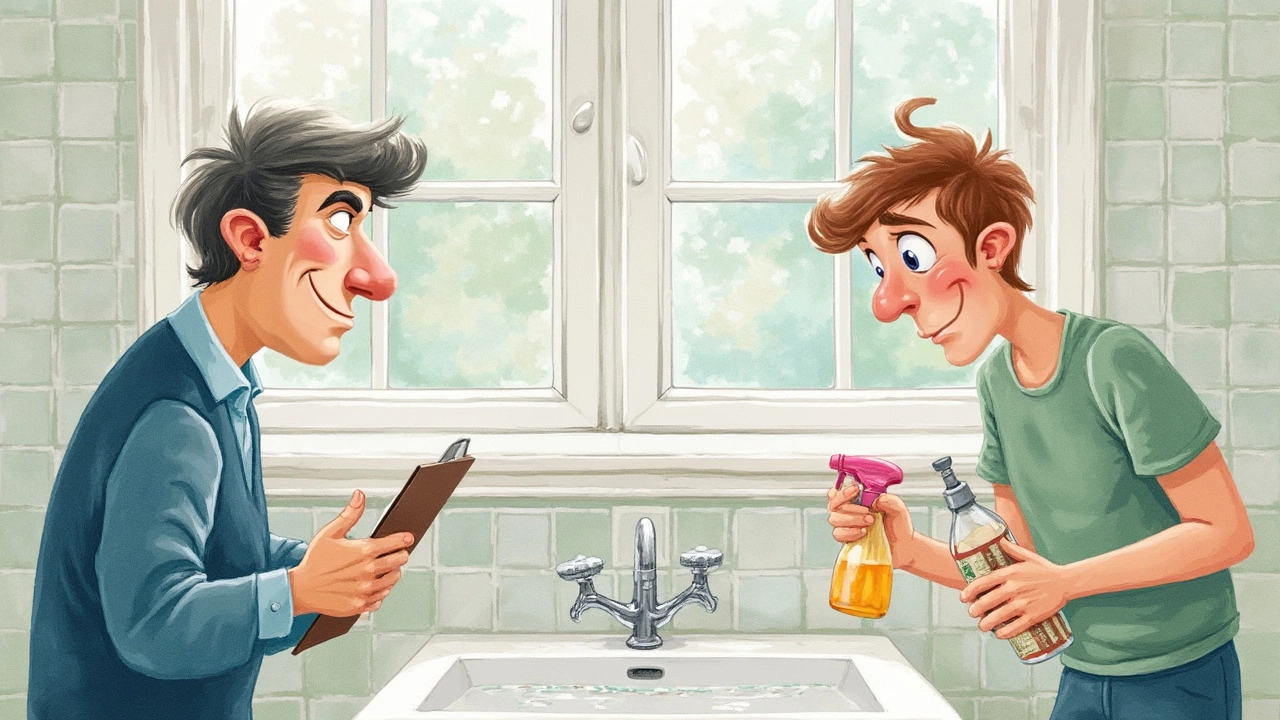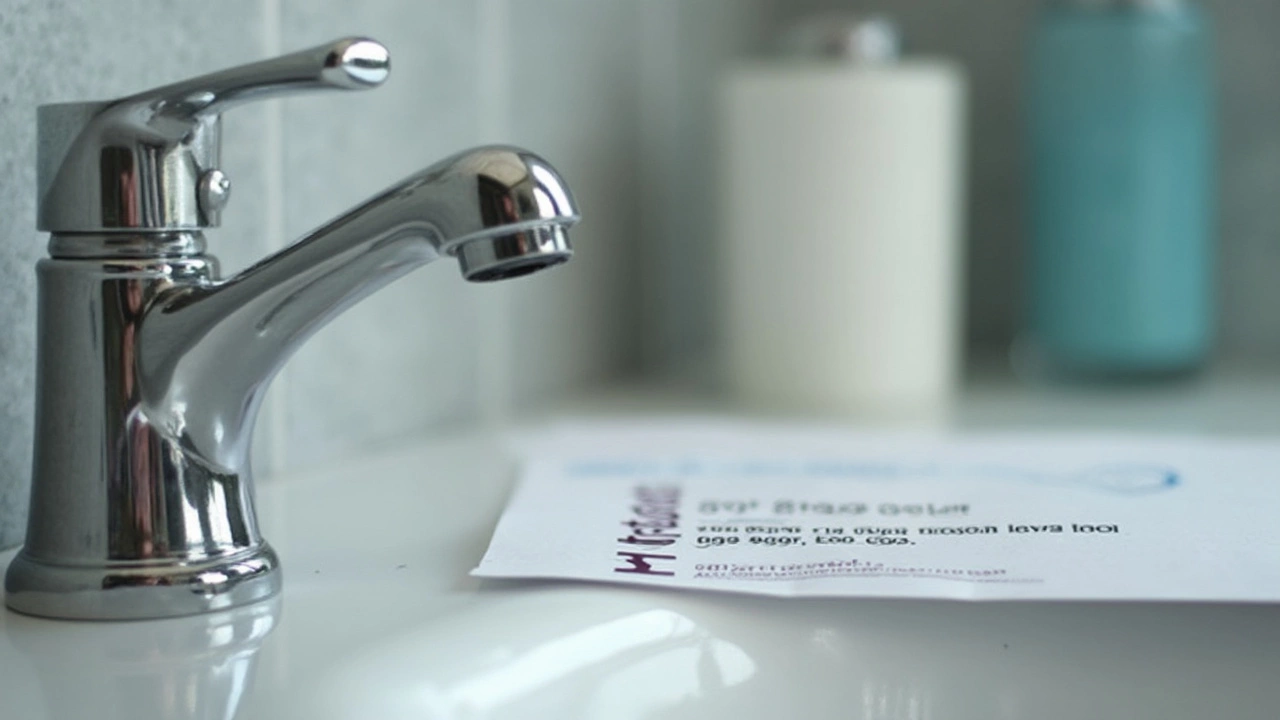When you move out, nothing stings like a landlord claiming for something you barely noticed—like limescale around the taps or kettle. You might feel like it’s just a fact of life, especially if you live anywhere with hard water. But is limescale really just fair wear and tear, or can it mess with your deposit?
Limescale builds up naturally when water evaporates and leaves minerals behind. It’s super common in London, Manchester, and basically anywhere in the UK with hard water. Landlords know this. The tricky part is that some’ll shrug it off, while others will eye it as a big cleaning fail.
If scrubbing the showerhead and kettle before an inspection sounds pointless, think again. Loads of tenants get deductions for the stuff that builds up quietly over time. So it pays to know what’s fair, what isn’t, and how to quickly blitz the worst spots before you move out.
- What Counts as Fair Wear and Tear?
- Why Limescale Loves Your Rental Flat
- Landlord Expectations: Limescale or Neglect?
- How to Remove Limescale Without Breaking the Bank
- Tips to Avoid Deposit Deductions
What Counts as Fair Wear and Tear?
The phrase "wear and tear" gets thrown around a lot in the rental world, but what does it actually cover? It basically means damage that happens when you’re living normally in a place. Cracked paint, faded carpets, maybe a tiny scuff on the wall—those all count. It’s stuff that happens from just using the home, not from trashing it.
Now, every landlord and letting agent should follow guidelines set out in government advice and by schemes like the Tenancy Deposit Scheme. They state that tenants shouldn’t be blamed for normal aging or stuff wearing out. Cleaning is different though. If something’s dirty because you never wiped it, that’s not fair wear and tear—that’s neglect, and it can cost you.
- Limescale on taps and showers: Happens naturally, especially in hard water areas. Moderate buildup is usual and should count as wear and tear, but thick, stubborn deposits scream “not cleaned for ages” and landlords might say that’s on you.
- Carpet flattening: Walking across the living room a thousand times? Normal. Giant red wine stain? Not wear and tear.
- Small nail holes: Usually fine. Random holes from hanging a TV wrong? Probably not.
Here’s a handy comparison to see where the line gets drawn:
| Item | Fair Wear and Tear | Damage or Neglect? |
|---|---|---|
| Taps | Light limescale marks | Thick, crusty buildup |
| Walls | Minor scuffs | Big holes or scratches |
| Kettle | Bit of scale inside | Solid white crust |
The rule is: if it’s down to time and normal use, you’re in the clear. If it’s obviously about not cleaning, expect questions when you go to claim your deposit. The more you show you’ve kept the place ticking over, the less likely you’ll face disputes over what counts as wear and tear.
Why Limescale Loves Your Rental Flat
Limescale isn’t picky about where it settles, but your rental flat often gives it a prime place to hang out. Here’s why: Over half of homes in the UK have hard water straight from the tap. Hard water means it’s loaded with minerals like calcium and magnesium—basically the raw stuff for limescale. Every time you use the shower, boil the kettle, or run the washing machine, you’re basically inviting those minerals to stick around.
You’ll most often spot limescale crusting on taps, showerheads, toilet bowls, and even inside kettles. Why? When water sits or dries out, especially in steamy bathrooms or kitchens, minerals get left behind and go rock-solid before you know it. Doesn’t help that most folks don’t wipe sinks and tiles after every use. Give it a few weeks, and it builds up fast in rental properties where daily cleaning is nobody’s favorite chore.
According to Thames Water’s website, "Limescale is a common headache in hard water areas, and its build-up can be rapid and stubborn if not tackled regularly."
Limescale is basically hard water’s calling card—if you’re not seeing any, you probably don’t have hard water in your area, and that’s a lucky break. — Waterwise UK
It gets worse in old buildings with ancient pipes or if you’ve got a dodgy boiler. Those two factors can actually increase how much limescale you’re fighting.
Just check out how common it is across the UK in this comparison:
| City | Chance of Hard Water (%) |
|---|---|
| London | 90 |
| Birmingham | 85 |
| Manchester | 70 |
Bottom line: Even if you keep things pretty clean, limescale is almost impossible to dodge in a typical UK flat. It’s just waiting for a chance to settle in.

Landlord Expectations: Limescale or Neglect?
Wondering how landlords really see limescale? It’s a common headache at checkout, especially with limescale deposits in the bathroom, kitchen, or around taps. The big thing to know: most landlords and letting agents expect these spots to be clean when you hand back the keys—even if you swear you’ve just dealt with it last month.
The law in England says tenants are responsible for returning the property in the same state it was at the start, except for normal "wear and tear." But here’s the rub—limescale, if it looks heavy or crusty, often lands in the "neglect" pile instead. Light traces? Usually fine. Build-up that looks like it’s been there for months? That’s when alarm bells ring for both check-in and check-out clerks.
Letting agents often use property inventory reports with photos taken on move-in day. They’ll literally compare the condition of sinks and taps to see if limescale has gotten worse. So, if there was already build-up before you moved in, and you haven’t added to it, you should be in the clear. If you’ve let it gather and cake on, though, that’s where "tenant cleaning" charges usually spring up. According to the Tenancy Deposit Scheme, limescale is one of the top reasons for cleaning deductions in the UK.
| Common Area | Landlord Expectation |
|---|---|
| Bathroom taps/showerheads | Free of heavy limescale deposits |
| Kettle inside | No visible limescale chunks or stains |
| Toilet/bath rim | No thick limescale rings |
One tip: take your own photos before moving in and right before moving out. Stuff like limescale is super easy to prove with zoomed-in shots if it becomes a debate later. Landlords usually aren’t out to be unfair—they just want clean, working fixtures for the next person. A 2024 survey by SafeDeposits Scotland found that 42% of landlords flagged bathroom cleaning (often limescale-related) as the most common cleaning issue after checkout.
If you want to avoid hassle, focus on visible patches in sinks, showers, and appliances. A quick run of vinegar or a proper limescale remover does the trick 99% of the time. Making an effort now can mean no awkward messages or lost money weeks after you've moved.
How to Remove Limescale Without Breaking the Bank
You don’t need to splash out on fancy cleaners to tackle limescale. Most of the time, what you have in your kitchen will do the trick.
Vinegar is a tried-and-true lifesaver for end of tenancy cleaning. Just soak paper towels in white vinegar, wrap them around taps or showerheads, and let them sit for an hour. Give it a scrub with an old toothbrush and you’ll see the gunk come off. Lemon juice works pretty much the same way. It’s the citric acid that breaks down those stubborn deposits.
- For kettles, fill halfway with a mix of water and vinegar, boil, and let it sit for 20 minutes. Rinse well to avoid the vinegar taste after.
- To clean bathroom glass or tiles with limescale, spray undiluted vinegar, leave for a bit, then wipe.
- Baking soda mixed with water makes a simple scrub for tricky spots like around taps or in the toilet bowl.
Not keen on the vinegar smell? Use cheap cola on toilet stains or shower drains. No joke—it fizzes up and the acid eats away the limescale just as well as pricier products.
If you’re fighting a serious build-up, repeat the process. Scrub gently—harsh scouring might damage surfaces and leave you in a worse position with your end of tenancy inspection.
| Common Cleaner | Average Cost (UK) | Effectiveness on Limescale |
|---|---|---|
| White Vinegar (1L) | £0.50 - £1.00 | High |
| Lemon Juice (200ml) | £0.40 - £0.80 | Medium-High |
| Baking Soda (500g) | £0.60 - £1.20 | Good (as a scrub) |
| Commercial Limescale Remover | £2.00 - £4.00 | Very High |
So if you’re watching your pennies before moving out, these simple steps help you ace the end of tenancy cleaning game without shelling out for expensive brands. And more importantly, they could save your tenancy deposit from unnecessary deductions.

Tips to Avoid Deposit Deductions
Want to keep your tenancy deposit safe from surprise cleaning charges? Limescale is one of those pain-in-the-neck problems that can turn up on your check-out report and eat a chunk out of your cash. Here’s what actually works:
- Stay on top of limescale regularly. Don’t leave it all for the move-out week. A quick scrub of taps, showerheads, and kettles every couple of weeks stops stuff from building up into rock-hard crust.
- Use white vinegar or lemon juice. These kitchen staples are miracle workers—they break down limescale without harsh chemicals. For taps and showerheads, soak a cloth in vinegar, wrap it around the area, and leave it for an hour. Rinse and wipe. Done.
- Clean hidden spots. Landlords and inventory clerks love peeking under tap handles, around toilet rims, and behind kitchen sinks. Pay special attention to these sneaky places, or you’ll regret it later!
- Descale appliances. Got a kettle or washing machine in your place? Limescale builds up in both. Follow the manufacturer’s instructions to descale before you hand back the keys.
- Document your cleaning. Before moving out, snap 'after' photos of cleaned spots. If your landlord tries to claim you ignored limescale, you’ve got proof.
If you live in a hard water area (about 60% of the UK does, according to Thames Water), limescale shows up faster. That means you’ve got to work a little harder—or just smarter. Here’s a look at how quickly it builds up in high versus low hardness areas:
| Water Hardness | Visible Limescale in Kettle |
|---|---|
| Hard (e.g., London) | 2-4 weeks |
| Soft (e.g., Manchester) | 8-12 weeks |
Don’t count on “it’s just wear and tear” to save you—most tenancy agreements include a clause about leaving the place as clean as you found it. Regular fixes and a deep blitz before check-out go a long way to keeping your end of tenancy record clean.
